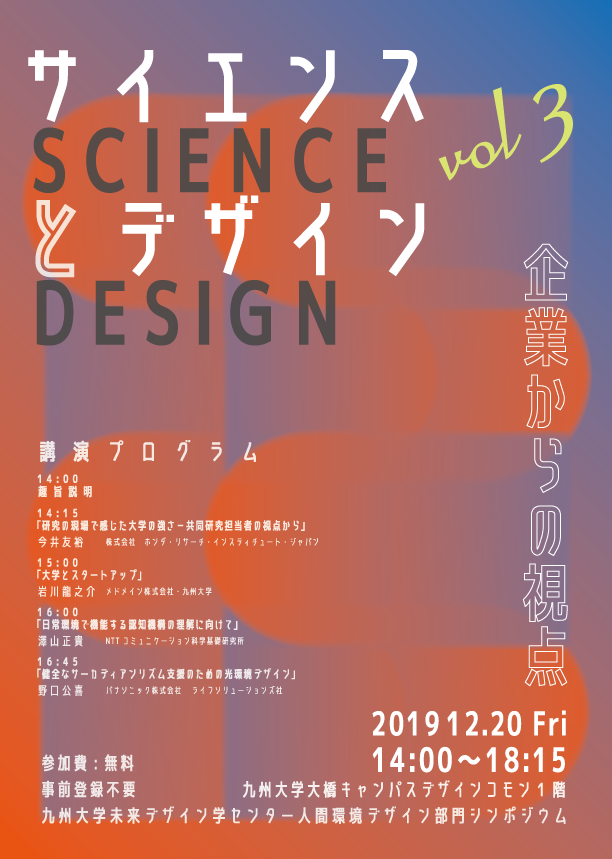ReportsActivity Report 2019 : Human Environment Design Department2019.3.31

The role expected of design is expanding not only in manufacturing but also in service and solving social problems and creating systems. At the same time, what is important for good design is a logical explanation of “why it is good design” and understanding of humans and the environment as the science that enables it.
With the evolving expectation on design, the Human Environment Design Department aims to contribute the research findings back to the society, not only through direct social implementation by researchers but also nurturing human resources through education and joint research. One of the specific initiatives is to hold a symposium called “Science and Design” that considers the possibilities and future of science in design studies.
In the first “Science and Design” (held on March 2, 2018), lecturers from four universities were invited to discuss the relationship between the four keywords – physiological anthropology, process perception, interactive art, and architectural planning, and give lectures on the latest status of each field and the university. A discussion was held on the future on the design education. There was an exchange of views and information between the faculty members and the presenters on science in design education. Also, in the second “Science and Design 2” (held on February 22, 2019), following the topics provided by the Graduate School of Design, Kyushu University, we invite speakers to give talks from various perspectives such as information communication, design psychology, and Kansei informatics. The discussions evolved from the ideal of post-human-centered design to the topic of AI technology and creativity related to Kansei informatics. In the latest “Science and Design 3” (held on December 20, 2019), four topics were provided from a corporate perspective based on collaborative research with Kyushu University. There was an in-depth discussion on the strengths and weaknesses of each university and company. It is expected that further progress will be made in future joint research.
